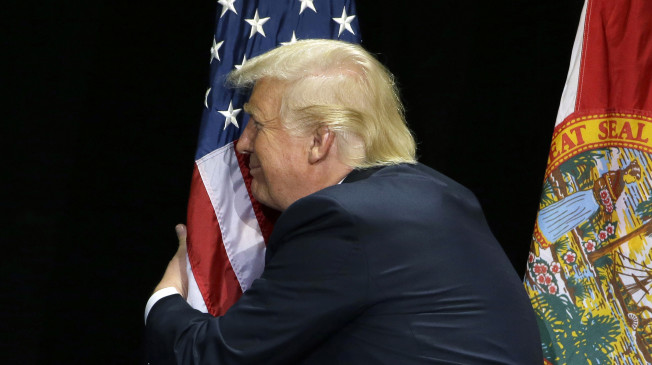
Fiat Chrysler Automobiles’s $1 billion plan to build in the U.S. three new Jeeps and a Ram pickup now produced in Mexico won plaudits from President-elect Donald Trump as he pressures the auto industry to hire and manufacture above the border.
The automaker will add 2,000 jobs at factories in Michigan and Ohio, the Italian-American company said Sunday ahead of the Detroit auto show. It will retool the facilities by 2020 and add the Wagoneer and Grand Wagoneer sport utility vehicles and a pickup model to its lineup. After improvements to a plant in Warren, Michigan, the site will be able to assemble Ram HD trucks now produced in Saltillo, Mexico.
“It’s finally happening,” Trump wrote in a tweet Monday morning, noting the announcement is coming on the heels of Ford Motor Co.’s decision last week to cancel a $1.6 billion factory in Mexico and invest $700 million into a Michigan plant. “Thank you Ford & Fiat C!”
Fiat Chrysler circulated the plans before any potential criticism of the company by Trump, who last week threatened General Motors with tariffs for importing a version of its Chevrolet Cruze from Mexico.
“We don’t make investment decisions based on risk of a tweet,” Chief Executive Officer Sergio Marchionne told reporters during a roundtabe at the North American International Auto Show. “I thank him,” he said of Trump. “We owed the country this investment.”
The added Jeep models have long been planned and analysts have been awaiting word on where they would be built, Michelle Krebs, senior analyst at Autotrader.com, said in an e-mail. “Investment in Jeep is smart money spent, and timing to ward off President-elect Trump’s possible tweets at the pass doesn’t hurt,” she wrote.
Among major automakers, Fiat Chrysler sells the highest percentage of light trucks, which tend to be more profitable than cars. For this reason, it’s also been seen as the most likely to benefit from the Trump administration and Republican-controlled Congress reducing regulatory demands for improved fuel economy, spurring a surge in the stock price.
“The sooner those new models will roll out of the factories, the better it is to support Fiat’s mix and therefore margins,” said Massimo Vecchio, an analyst at Mediobanca in Milan. “All major corporations are moving along the line of what Trump asked. They could get in exchange very likely a massive cut in the corporate tax rate, which is possible only if the U.S. increases” its gross domestic product, the broadest measure of economic activity, Vecchio said.
Fiat Chrysler employs more than 11,800 workers in Mexico at seven manufacturing facilities, which shipped 477,000 vehicles in 2015, according to the company’s website. Its models built south of the border include Ram trucks and vans in Saltillo and Fiat 500 small cars and Dodge Journey SUVs in Toluca.
Having the ability to make those big work trucks in the U.S. as well as Mexico provides a hedge against a potential tax on imported vehicles, which Trump has threatened against GM and Toyota, in addition to Ford.
“Politically, it follows along with everything that’s going on, in terms of domestic production,” said Tom Libby, an analyst with IHS Markit.
The company is set to start producing a new version of its Jeep Compass SUV for the U.S. market at the Toluca plant. Its factory in Belvidere, Illinois, which used to assemble the model as well as the Jeep Patriot and Dodge Dart compact car, is being retooled to make Jeep Cherokee SUVs.
The added products reflect “where the market’s going,” Libby said. “That large SUV category is very profitable, it’s very domestic-intended and it’s a hole for them, so that makes all the sense in the world. Pickups are also doing very well. You put the combination of the Jeep brand with a pickup and you just can’t miss.”
Featured Image:
(c) 2017, Bloomberg

